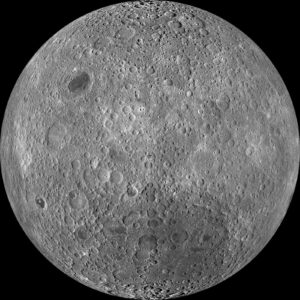
The world needs trees. Trees improve our health and act as natural filters cleaning our air. Harmful pollutants and carbon are trapped in the leaf, bark, and root. These pollutants are harmlessly buried in the soil. Around each tree there is an incredible diversity of microscopic life.
The bacteria and fungi that support the life of trees are like the internet in the soil. Nutrients, water, carbon, and even gases are exchanged and shared across the forest using the vast, unseen network of microbes. Fungal networks also boost a tree’s immune system. When a tree is established in the fungal network, it makes plants more resistant to disease.
Trees provide for wildlife. Birds nest in the canopies of trees. Insects, small mammals, bats, and other creatures also make their home in trees. Even dead trees offer opportunities for insects to complete their life cycle or for birds such as woodpeckers to find food.
Until recently, the answer to a simple question: How many trees are there on Earth, would have been complicated to answer. Advances in technology and remote sensing researchers can now provide an estimate, about three trillion trees on Earth. We would write it out in numbers as 3,000,000,000,000. That might seem to be a large number. It is not much if we try to plot against the equatorial diameter of Earth 24,901 miles (40, 075 km).
We also know that we are losing large number of trees every year. Researchers have estimated that around 15 billion trees are lost due to land changes, by forest management practices, and deforestation. Mapping the loss of forests and tree cover ever since human civilization was established is an astounding feat. Yet, it gives important information. Going back to 11,700 years ago, scientists have been able to reconstruct that we lost 46% of tree cover in establishing civilizations.
As we removed trees to make room for settlements, farms, villages, cities, road and other developmental needs, we have also damaged ourselves. Without trees to absorb and fix the atmospheric gases, the amount of carbon in the air has increased leading to accelerated climate change. Trees are prominent lifeforms on Earth. Yet, only now, we are beginning to understand the implications of disturbing the balance. With loss of trees, we are losing species of insects and animals.
Do we need more trees? Short answer is probably yes. Humans may need trees more than any other species. Every human being breathes 9.5 tons of air every year. Since oxygen only makes up 23% of that air, by mass, we can only extract a little over a third of the oxygen in every breath, that works out to about 740 kgs of oxygen per year. That is the output of 7 or 8 trees. In a lifetime, if one lives for 100 years, we could use the service of 800 trees. This is for one person!
Good news is that scientists have figured out there is space to add 1.2 trillion trees. If we could allow the trees to grow, we would increase natural carbon reservoirs very much. Now, we all have some space in our yards or community that could be planted with trees. That could be our evergreen legacy for the future. Think about the opportunity to provide for the change.

